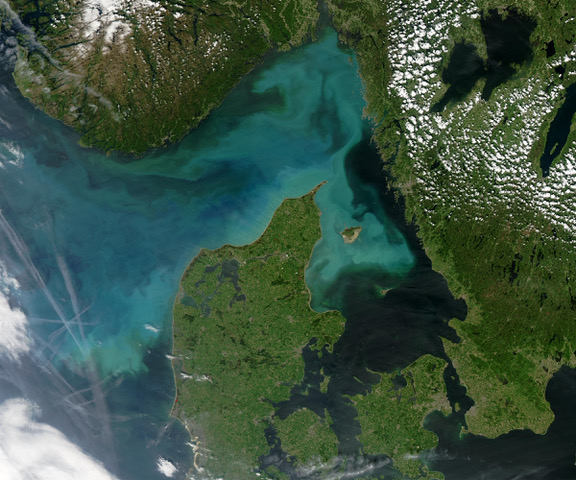In a study published in Nature Communications, with implications for understanding effects of climate change, ISB researchers show microscopic phytoplankton are more resilient in an acidified environment

3 Bullets:
- The foundation of many marine food webs in which corals, fish and whales depend on are microscopic photosynthetic algae called diatoms.
- Climate change is altering the carbonate chemistry of marine ecosystems and lowering the pH, termed ocean acidification.
- ISB scientists have developed a stress test to quantify and predict how ocean acidification would impact the resilience of diatoms in the future.
Diatoms are microscopic phytoplankton that capture light and convert it to chemical energy, which they use to consume carbon dioxide. Globally, diatoms account for approximately 40 percent of the total carbon sequestered in our oceans while releasing about 20 percent of the world’s breathable oxygen. They are the foundation for many aquatic food webs and their fate in a changing climate will have impacts on ecosystems around the globe.
If diatoms were to shrink in population abundance or even collapse, there would be significant implications for marine food webs and beyond. For instance, coral reefs and fisheries rely on stable phytoplankton communities to feed higher organisms along the food chain like krill, fish and whales. Understanding how diatoms will respond to the impacts of climate change, and in particular ocean acidification, will be critical in predicting future outcomes that guide proactive conservation efforts.
Marine diatoms living in the ocean experience daily and seasonal fluctuations of multiple environmental factors like light levels, nutrient availabilities and temperatures. As atmospheric carbon dioxide concentrations continue to rise over the next 100 years, it will also cause the oceans to become more acidic. Researchers at the Institute for Systems Biology developed an experimental framework that tests the ability diatoms to withstand and recovery from incrementally higher amounts of stress while experiencing a fluctuating environment.
The study, detailed in the journal Nature Communications in an article titled “Ocean Acidification Conditions Increase Resilience of Marine Diatoms,” determined that diatoms in an acidified ocean can conserve valuable energy normally used for carbon dioxide consumption in order to withstand stress-induced population collapse, meaning they will be more resilient in future ocean conditions. The researchers observed that diatoms at a lower pH were consistently more capable of adopting the appropriate cellular function in relation to their environment, a phenomenon that staves off population collapse.
“To date, the effects of ocean acidification on diatoms have been mixed, mainly because of the complex interactions between the biology and physical chemistry. We decided to take a new and different approach to this biological question by exposing the diatom to a stress test,” said Dr. Jacob Valenzuela, a postdoctoral fellow in ISB’s Baliga Lab and lead author of the Nature Communications article. “By using a systems biology approach in conjunction with a stress test, we were able to demonstrate diatom resilience increases under ocean acidification conditions.”
Climate change induced ocean acidification may make diatoms more resilient but it could also have adverse effects on other phytoplankton populations, potentially shifting them from stable to sensitive. The impacts of such a foundational shift may ripple throughout the marine ecosystems. The experimental framework developed in this study may be extended to evaluate the effects of many potential climate change-related threats on the microbial diversity of our most sensitive environmental habitats.
Title: Ocean Acidification Conditions Increase Resilience of Marine Diatoms
Journal: Nature Communications
Authors: Jacob J. Valenzuela, Adrián López García de Lomana, Allison Lee, E.V. Armbrust,
Mónica V. Orellana & Nitin S. Baliga
Pub. Date: June 13, 2018
DOI: https://doi.org/10.1038/s41467-018-04742-3
